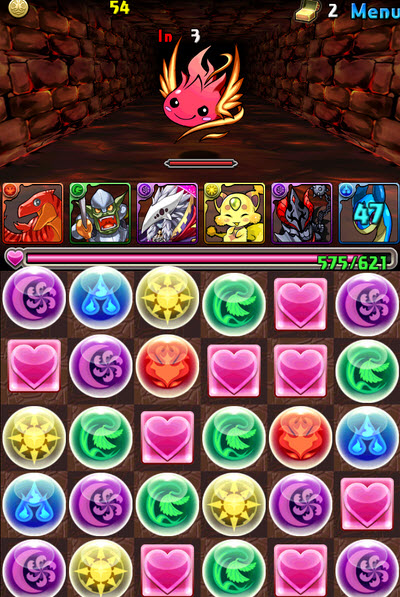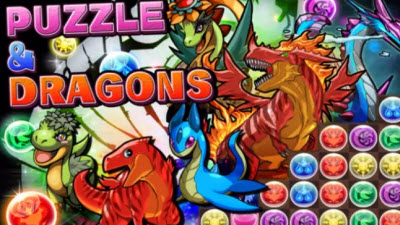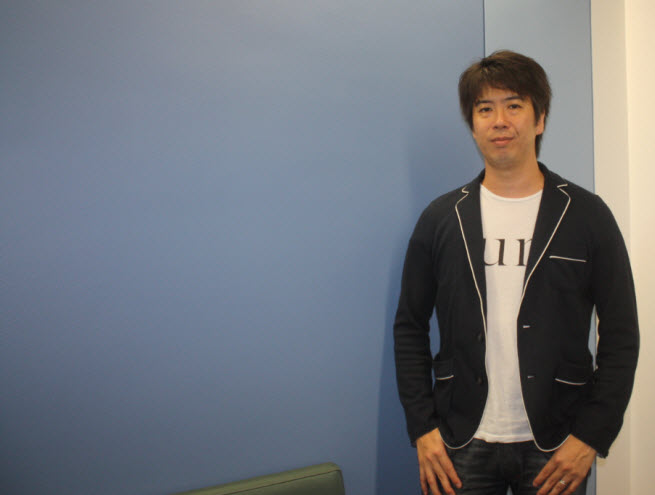GungHo Online Entertainment has moved from obscurity to becoming one of the major players in mobile games this year thanks to the enormous success of its free-to-play Puzzle & Dragons game, which has dominated the top-grossing app store charts on a worldwide basis for months. It’s generating $2.5 million in revenue a day, with downloads above 11 million. It combines casual Bejeweled-like gameplay with a hardcore role-playing game.
Five months ago, GungHo’s stock was worth $280 million. Now its value is $4.5 billion, or more than Zynga ($2.8 billion). The company is about to become a majority-owned subsidiary of Japan’s telecommunications giant SoftBank, headed by Masayoshi Son, whose brother, Taizo, is chairman of GungHo. To players, that success isn’t a surprise. One woman, who shall remain nameless, told me she had spent more than $300 on the game.
A game built by just six people.
Puzzle & Dragons launched in the spring of last year, and it hit No. 1 on the Apple iTunes App Store in Japan on the top-grossing chart within a few days. It has been there ever since. It has also dominated the charts on Android, though the number of actual downloads has been small. A well-timed television commercial helped push it into the stratosphere in Japan. It’s not an overnight success story, as the company has been in business for more than a decade and it has created hits such as the Ragnarok Online game. The company operates multiple studios, and it now has more than 40 working on updates for Puzzle & Dragons.
In the U.S., however, Puzzle & Dragons isn’t as popular. Launched in November, the U.S. version is ranked at No. 53 on the Apple iTunes App Store in terms of top-grossing apps, and it is No. 874 in terms of downloads, according to App Annie. Morishita said the company hasn’t spent any money on marketing in the U.S., and it will wait to do so until it has higher average ratings for the game.
Meanwhile, GungHo acquired Grasshopper Manufacture, the maker of Lollipop Chainsaw. That company was founded by legendary game designer Goichi Suda, also known as Suda51. He made acclaimed games such as No More Heroes and Killer7. Such investments could improve the odds that GungHo will be more than a one-hit wonder.
We looked up Kazuki Morishita, the chief executive of GungHo, at the Game Developers Conference in San Francisco last week. Here’s our edited transcript of our interview with Morishita, who spoke through a translator.
 GamesBeat: I had never heard of you guys until I started looking at some of the worldwide results of the top-grossing games. How did your success happen? How did your games become so popular?
GamesBeat: I had never heard of you guys until I started looking at some of the worldwide results of the top-grossing games. How did your success happen? How did your games become so popular?
Kazuki Morishita: GungHo was established back in 2002. It’s been more than 10 years. We specialized in PC and console games, so mobile was a later step. We only started there two years ago, and we’ve gone from there to lead the mobile space.
GamesBeat: How many mobile games had you done before Puzzle & Dragons?
Morishita: We’ve published a total of 10 mobile games so far. Five of those were in the past year.
GamesBeat: Why did this one become so popular?
Morishita: Good luck. [Laughs] I established the company when I was in my mid-20s, and back then I had a very hands-on approach. The company was smaller, so I could oversee all of the creative direction and production and development. We had a very big title in Ragnarok Online, a massively multiplayer online role-playing game, and as the company grew from there, I focused more on the business aspect.
A couple of years into that, the quality of our games started slowly declining. They weren’t as well received by the public. Three years ago, I decided to change our business style and go back to taking charge of the creative direction. I’m president and CEO of GungHo, but at the same time I’m also executive producer of all games. I’m very hands-on with all these releases. If I have to push back certain games because they’re not up to standards, I can do that. That helped with Puzzle & Dragons when it came to controlling the level of quality.
GamesBeat: What was it like to begin that project and see it through to completion? How much time and how many people did it take? Was there a time when you knew you had a hit?
Morishita: The concept stage for Puzzle & Dragons started in August 2011 or September 2011. At the time, card battle games were really popular in Japan, so I thought we could come up with a new type of game in that genre. I personally thought most of the games there were crap. I couldn’t understand why they were such a big deal. I thought we could turn the genre upside-down and come up with something very innovative. A month after the concept stage got going, I knew we had something pretty special. It was a lot of fun.
Altogether it took a little less than half a year to make. The first month after release, the team was only six or seven people, not counting the illustrators. Right now we’re up to about 40.
Originally, the game was designed so that you could play the puzzle sideways. You held the screen horizontally. Then, two or three weeks later, I had the idea of moving it this way and making this part the puzzle, so we could focus more on the dungeon-RPG elements. By doing that, we were able to merge more genres together. That was a turning point, where we realized this was going somewhere. It was almost by chance, but that’s what I mean about good luck.
To be honest, I wasn’t anticipating the sales to be so high. Even though I knew we had something fun to play, that doesn’t necessarily mean it’s a moneymaker. But I’m confident now that Puzzle & Dragons is the most addictive and fun game in the world right now.
 GamesBeat: What day did it launch in Japan? How quickly did it take off from there?
GamesBeat: What day did it launch in Japan? How quickly did it take off from there?
Morishita: The iOS version launched on February 20, 2012, and it was only two or three days before it became a top-grossing game in Japan. Seven months later we released the Android version. Originally, we wanted to do a simultaneous launch for all platforms, but at the time we were a little short-staffed and our people were more used to developing for iOS. We developed on the native platform first, and when we had more people who were comfortable working in Unity, that’s when we started on the Android version. Android took about a week and a half to reach No. 1.
When we launched the Android version, since the game was now available on both platforms, we did a new marketing push. We aired a TV spot in Japan, which isn’t very common for mobile games, but we were confident that we had something very strong. Up until that point, it was all word of mouth spreading the game.
GamesBeat: Is your team all working on continuous updates for the game now?
Morishita: Right now, about half of those people – around 20 – are working on updates and ongoing operations.
GamesBeat: Most games that hit No. 1 only stay there for a few weeks. This one has been there for how long? What are some of the other records you’ve set?
Morishita: From day two until now, we’ve stayed at number one on iOS. We’ve never dropped out. It’s the same with Android.
GamesBeat: When did the bigger companies start paying attention, like SoftBank? When did bigger things start to happen?
Morishita: SoftBank was actually one of the first investors in GungHo. They had 33 percent of stock in the company in 2002. When they bought an added 7 percent that just brought their share up. As far as the operation of GungHo, nothing has really changed. Some people just sold their shares and Softbank picked them up.
GamesBeat: Are you surprised at how successful you’ve become?
Morishita: I’m not shocked or surprised, and some people find that kind of strange. [Laughs] We’re just so focused on creating and developing the next new fun game. I’m very calm about all this media interest. It’s not going to change our philosophy about making games.
GamesBeat: Puzzle & Dragons hasn’t done quite as well here in the United States. Are there any reasons you think might explain that difference? Do you think there’s something you can do to make it more successful here?
Morishita: In Japan, the game came out in February. In the U.S., it didn’t come out until November. There’s that lead time that Japan had. Since we reached the top of the charts there in a matter of days, it was very easy to get started on marketing quickly. If we’re going to do any major marketing push, first the user reviews and ratings have to be high. Otherwise people aren’t going to be interested when they go to see the product. Our thinking is that we’ll wait a while – however long it may take – for the reviews to be very positive. The game is already up to a 4.5 average on the App Store, and we’re at 4.1 or 4.2 on Google Play, so we’ll be ready to start soon.
Geography is another factor in play. The size of the country is so different. Something spreads through the media much quicker in a country like Japan. There’s a lot more lag from the time difference and the size difference over here.
Another important thing that we focus on before we spend a lot of money on marketing is to make sure that the operation is very smooth. When users review the game, I want the fun aspects of the game to be part of what they talk about, but also the online support and customer service. For mobile games that are constantly updating and doing events, we have to make sure the operations are perfect. It’s not like a console game that’s a one-time purchase.
At GungHo, we had 10 years of providing that kind of online customer service and operations on the PC side in our online games. We’re very familiar with what customers appreciate, and I think that’s part of why we were able to do so well in that regard with Puzzle & Dragons.

GamesBeat: What is it about the game that makes people spend more?
Morishita: As far as monetization, there are four basic things. One is the ability to continue after a “game over.” Another is the stamina bar, which is necessary to continue playing in newer dungeons. That depletes as you enter, and it recharges after a couple of minutes. Without that stamina, you have to wait. If you want to completely recharge, though, you can pay for it. Third, there’s something called the monster box, where people can collect more and more monsters. There’s a limit to that, so you can spend money to make it bigger. The last thing is the rare egg machine. You can spin that to get rare monsters that are more difficult to collect in the dungeons.
We notice that newer users to spend more money to continue playing after they die. Eventually, after they get more into the game, they start wanting more rare monsters, so they start spending on the rare egg machine instead. It’s interesting to see that shift.
We made sure that there’s a balance between luck and your own personal growth. You get better at the dungeons as you play, but that’s balanced well. In the puzzles, for example, when you match three orbs of the same color, it drops down and you get new orbs. But you don’t know what color those are going to be, so luck is still a factor. There’s always a chance of a surprise when you get some more combinations right away.
GamesBeat: What do you think your success tells us about the state of the game industry?
Morishita: When it comes to the mobile gaming market, I feel like it’s still going to grow and reach new users in the coming years. It’s a good entryway for nongamers. People who haven’t played games in a long time, or who never played games, it’s more accessible to them.
Personally, I still enjoy console games more than mobile games, but when I compare the two, I think console games are kind of like the entrée, the main dish. Mobile games are more like a snack or a dessert. I can just pop a bite in my mouth very quickly – one bite here, one bite there. For the main course you might have to sit down and take your time for an hour. But they’re both good. It’s not like one is more fun than the other.
GamesBeat: What kind of opportunities do you have for expansion at GungHo? Do you plan to add more developers or more studios? Are you thinking about expanding into new territories? Are you planning to stay with console games?
Morishita: GungHo will definitely keep on releasing console games as well as mobile. As far as territories that we’re working in, that already includes Asia – with countries like Taiwan and Hong Kong – as well as Europe and the U.S. As far as PC games, we’ve already released those in 67 countries. We don’t have any plans to acquire any new studios.
GamesBeat: Games like Angry Birds have been successful, but the big question has always been how long they’ll last. What do you think about how long Puzzle & Dragons will last? Zynga bought OMGPOP for Draw Something right at the wrong time – it bought the studio, and Draw Something fell off very quickly afterward.
Morishita: For Zynga, it’s unfortunate that they bought that company at the wrong time. It was bad luck. As far as how I think we can avoid that, first of all, I’m not interested in buying up companies that are doing well just for our benefit. The big difference when you compare GungHo and Zynga, their CEO isn’t a game creator. Their mindset is different. I don’t think their way is wrong, necessarily, but I have my own way of doing things.
GamesBeat: How long is it until we start to see Puzzle & Dragons get its own clothing line?
Morishita: We’ve actually already started. [Laughs] We have a dedicated merchandise business, with about 100 items.
GamesBeat: Have the mobile messaging platforms made a big difference, like LINE and the others?
Morishita: I don’t think they’ve had such a big influence on our viral growth. It was more based on Facebook or Twitter. Also, on the trains in Japan, you always see people playing games sitting next to you. You might be curious and ask them what they’re playing. At school students are playing between classes and they talk about it. That’s a big part of it.
GamesBeat: Those mobile messaging networks like LINE are doing really well. Is there a way for you to exploit that at all in other games? Do you expect that’s going to become a gigantic channel?
Morishita: We don’t plan on using or exploiting the popularity of mobile messaging platforms. I don’t like following other people’s trends. [Chuckles]
GamesBeat: Those seem like very lightweight games, too. They’re not core games.
Morishita: I don’t think lightweight apps or games are necessarily a bad thing. But they need to have some depth behind the casual ease of getting into them. We have an extensive knowledge of RPG and action games – we’ve been working on those for the last 10 years – so we’ve been able to add those elements and use that part of our background to create these sorts of mid-core games.
GamesBeat: Do you have any advice for aspiring game developers?
Morishita: It’s natural that if you want to make a living out of this, you have to think about your time, energy, money, and other resources. That’s all part of any business. But one thing I can say is remember why you wanted to be a creator in the first place. Don’t lie to yourself. You should enjoy what you’re doing. If you have any doubts or unclear feelings, you’re not going to make a good game.
VentureBeat's mission is to be a digital town square for technical decision-makers to gain knowledge about transformative enterprise technology and transact. Learn More

